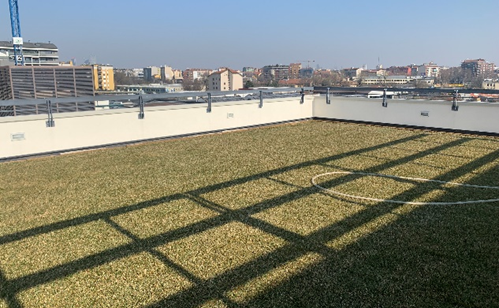
Il 10 Luglio 2019 i colleghi del Politecnico di Milano Israa Mahmoud ed Eugenio Morello hanno partecipato alla Conferenza Internazionale di AESOP (Association of European School of Planning) a Venezia (https://www.aesop2019.eu/) con un intervento sulle sfide di co-creazione e di rigenerazione urbana (Does Co-creation of Nature-based Solutions stimulate urban transition? learning from regeneration experiences of nine urban living labs).
Di seguito l’abstract dell’intervento (in inglese)
Abstract: Implementing Nature-based solutions in urban contexts has proved out-coming multiple co-benefits for cities ecosystem services, urban resilience and biodiversity; as simultaneously equal to amelioration of social justice and well-being. Yet, at the urban policies framework level, a new integration is needed to emerge between inclusive governance approaches and strict accountability on regulatory legislation and incentive-based initiatives towards employing NBS. On one hand, innovative NBS tend to better orient towards a combination of multi-functional solutions thus, the NBS implementation process requires a multi-scalar flexibility in planning policies, tools of implementation and tailored-based urban actions. On the other hand, the urge to involve a multiplicity of stakeholders that collaborate in complete co-creation (co-design of tools, co-implementation and co-monitoring of NBS) reveals an overlapping common interest from diversity of community members and governmental authorities. In this research, we test a complete co-creation pathway for catalyzing the transition of planning policies in three cities (London, Hamburg and Milan) within the CLEVER Cities project to implement NBS in urban regeneration processes, whereas nine Action Labs are identified and tested as urban living labs experiences. Grounded on a comparative analysis, key characterization for NBS implementation framework could be categorized into: [1] current urban planning strategies and governance issues [2] different typologies and scales of NBS integration into policies [3] place-based contextual urban morphology challenges, and [4] availability of financial investment and main stimulating actors. First research results confirm the importance of involving multiplicity of stakeholders and technical fields experts, as well as, the promotion of multiple co-benefits enabling to achieve a seamless shared co-creation process. That combination brings to forefront a radical paradigmatic change in societal, individual, administrative urban planning practices and mainstreams NBS in an inclusive shared governance process.








